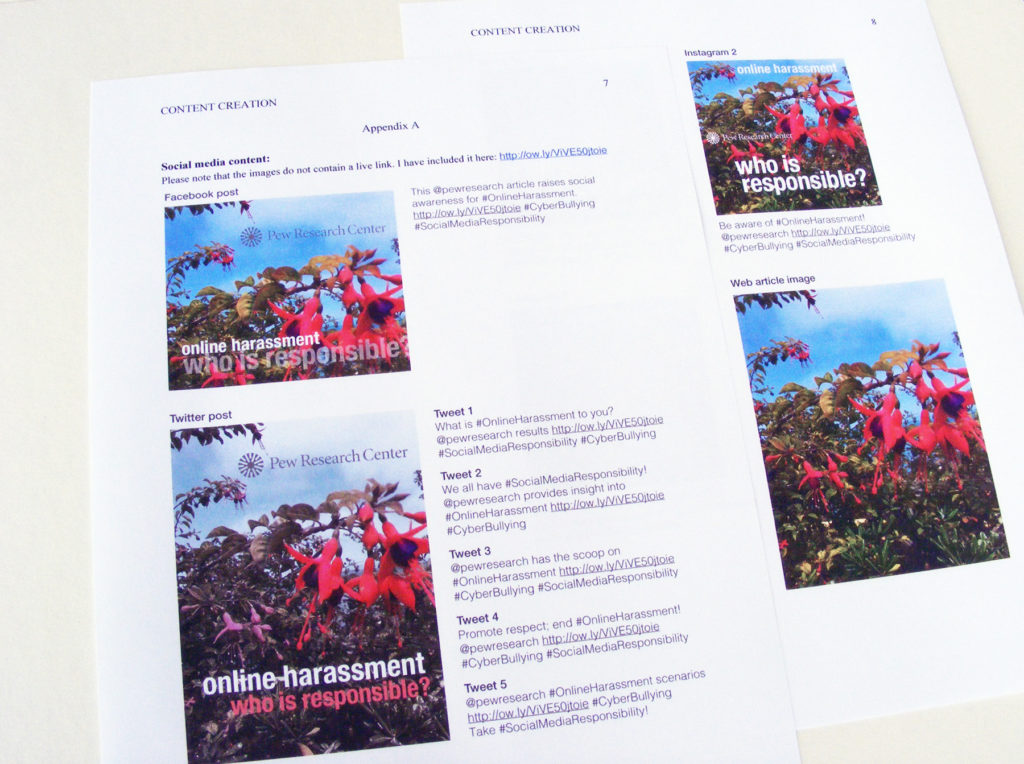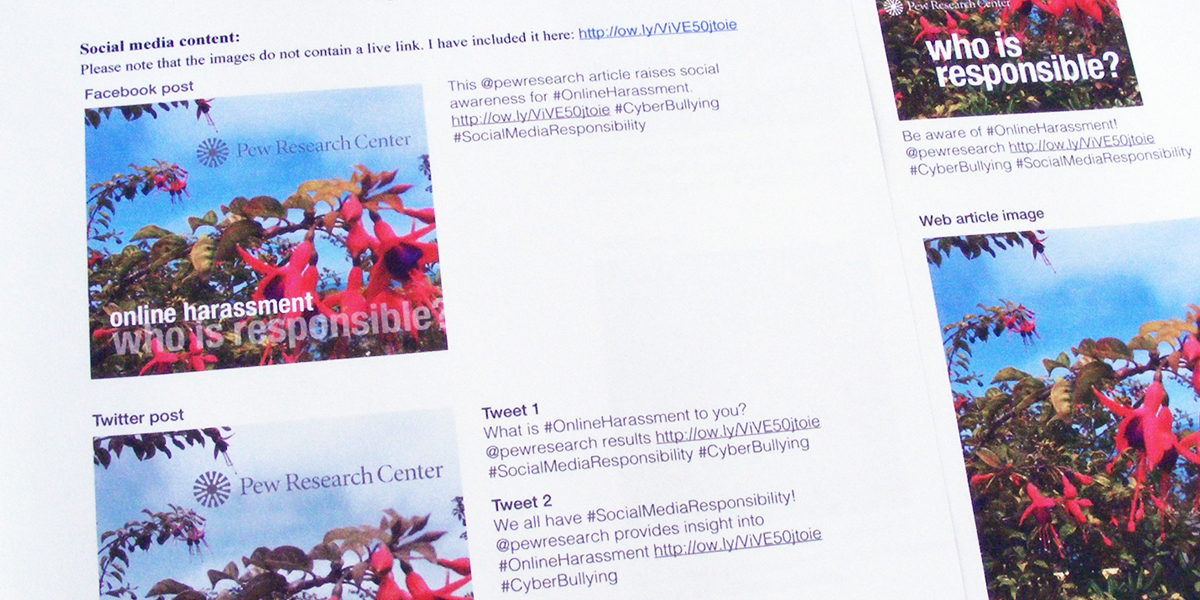In Advanced Digital Communication, I produced this web content based on a Pew Research article about online harassment. Search engine optimization and social media posts organized within a content calendar, were also part of the assignment.
Developing a variety of related material is necessary for the effective use of content on different social platforms. This allows relevant content to reach specific audiences.
What is online harassment and who is responsible?

Social media have become dominant in our lives, and social issues relating to judgements and discrimination in some cases have escalated to online harassment. Social media platforms are empowering as they enable freedom of language and this sets the tone for how people treat others while interacting online. There are social policies to guide the appropriateness of application use and these rules should be taken seriously by each user so that social interaction occurs respectfully and will not elevate, but instead decrease this form of cyber bullying.
Public opinion of online harassment
A report about online harassment was recently released by Pew Research Center. In the survey three scenarios of online social media interactions were presented. Each situation began with a simple conversation or post made by an individual, which triggered a chain of reactions and opinions, eventually elevating to a social level that crossed the line, becoming inappropriate. Participants were chosen by random sampling methods and answered questions to help determine what people consider to be online harassment and when social online platforms should take responsibility to address threatening behaviours.
Smith and Duggan (2018) found that “most agree that online harassment occurs when people make direct personal threats against others” and that “the public is much more divided over whether or not other behaviors…constitute online harassment” (para. 3). The studies also show that “majorities agree that the platforms should step in to address behaviors such as threatening messages” but opinions vary “when it comes to the responsibilities of the platforms at other points in these incidents” (Smith & Duggan, 2018, para. 4).
Respectful communication
The article is applicable to social media users and presents an understanding of where appropriate social media behaviour becomes inappropriate. There is a demand for attention to this issue as social media have become a necessity for relationship interaction on both a personal and professional level. It is important for society to adopt and promote a healthy, respectful culture within the online world of communication so that online harassment issues will be an exception rather than becoming the norm.
Social Media

Content Calendar
Previous studies have been conducted on social media strategies to determine when the best response times are. Hootsuite (2018) indicates that the best time to post on Facebook is “between 12 p.m. and 3 p.m. Monday, Wednesday, Thursday, and Friday” and that “the best time to post on Twitter is at 3 p.m. Monday to Friday.”Instagram users will get the best results “from 12 p.m. to 1 p.m. Monday to Friday” (Hootsuite, 2018). I have created my content calendar based on the advice from Hootsuite as they are a credible source of digital information. It is important to follow a consistent pattern to reach the intended audience and receive feedback; consideration of the timing of the posts and which days are best to schedule them is key.

References
Pew Research Center. (2018). Crossing the line: What counts as online harassment? Retrieved from http://www.pewinternet.org/2018/01/04/
crossing-the-line-what-counts-as-online-harassment/
Hootsuite. (2018). The best time to post on Instagram, Facebook, Twitter, and LinkedIn [Blog post]. Retrieved fromhttps://blog.hootsuite.com/best-time-to-post-on-facebook-twitter-instagram/#facebook
